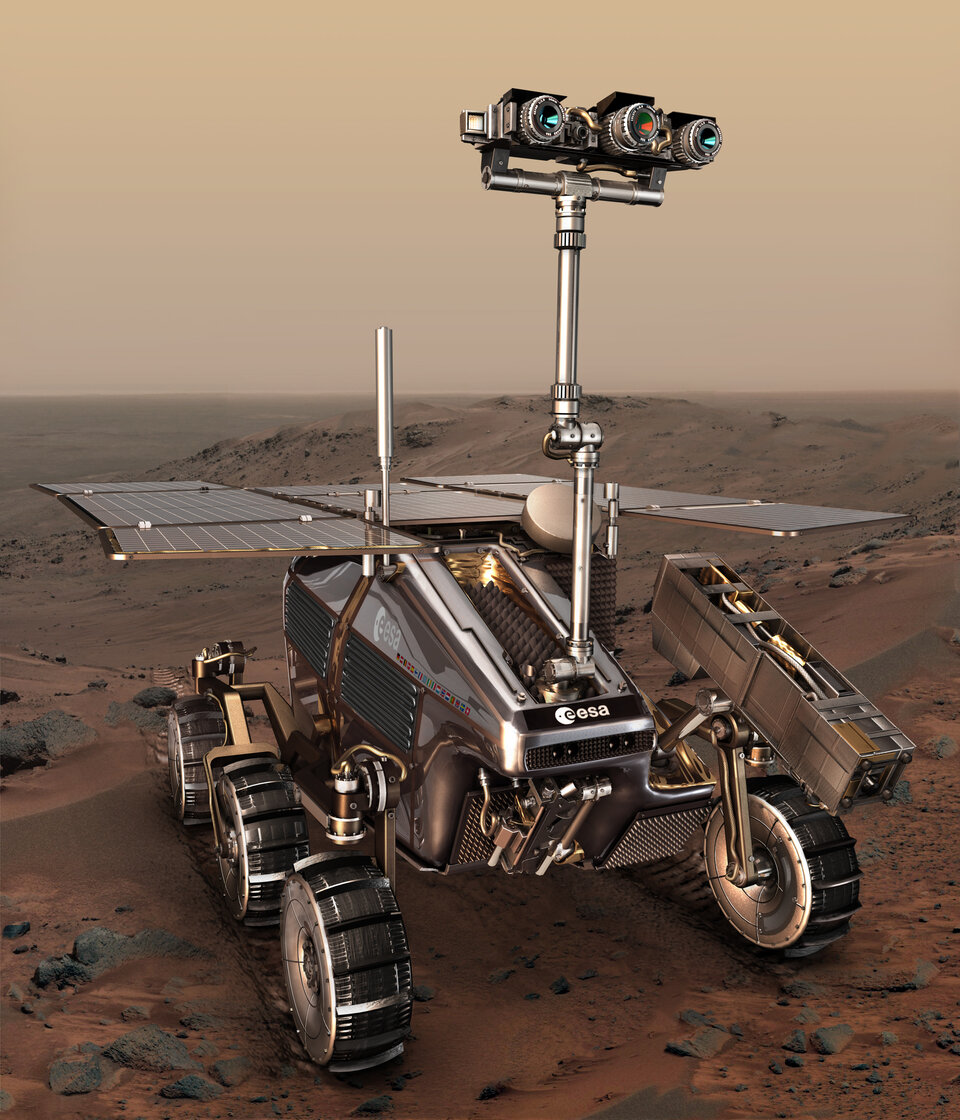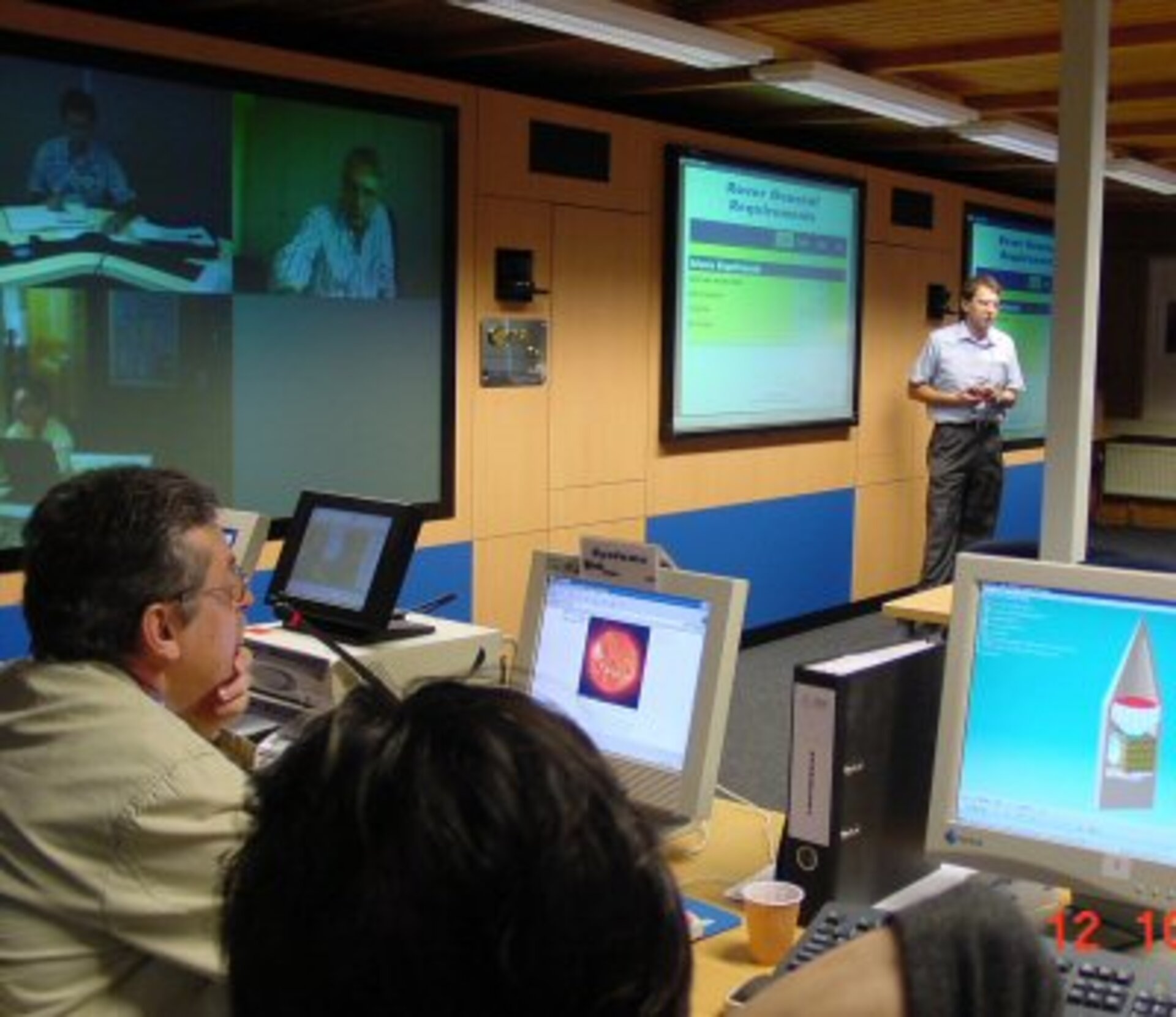ExoMars: a success story for CDF
On December 5-6 in Berlin, the ESA Ministerial Council gave the go-ahead for the implementation of the ExoMars mission, which will feature landing a rover onto the Mars surface to perform exobiology measurements and look for traces of past or extinct life on the red planet.
The approval occurred after a period of only three years from initial conception, which is regarded as a short time for such a complex mission.
The CDF has contributed to this achievement, supporting all phases of the project to date. The definition phase started in 2002 with a quick assessment of several mission options. This confirmed the feasibility of the mission and allowed a clear definition of the technical and programmatic requirements for the industrial phase A mission studies.
The CDF then performed the reviews of the industrial work, suggesting improvements and identifying critical areas requiring further investigation.

At the end of the phase A studies, CDF supported the preparation of the technical documentation for the industrial phase B1 and the definition of a final mission baseline, which led to the approval by the Ministerial Council.
As well as providing the centralised project room and project data repository for ExoMars, the CDF processed inputs from industry, which were based on the CDF specifications and formats. This in turn allowed the CDF to maintain and update the mission design model, allowing ESA specialists to more effectively support the industrial work.
ExoMars has been the first example at ESA, of the application of Concurrent Engineering from conception to implementation of a space mission. This success encourages more extensive application of CE techniques to other future missions.




